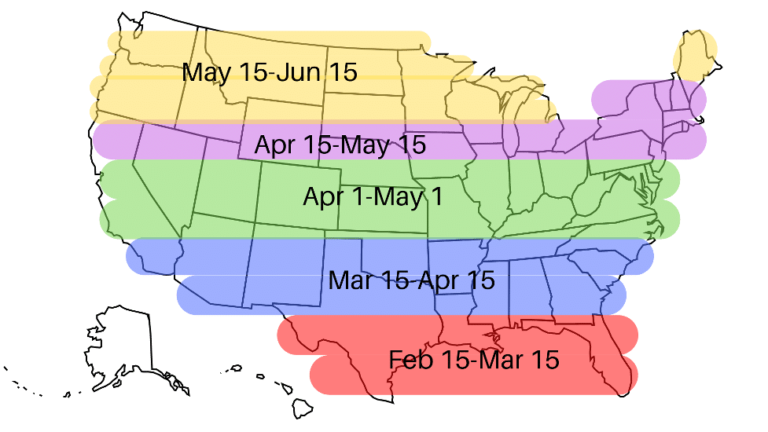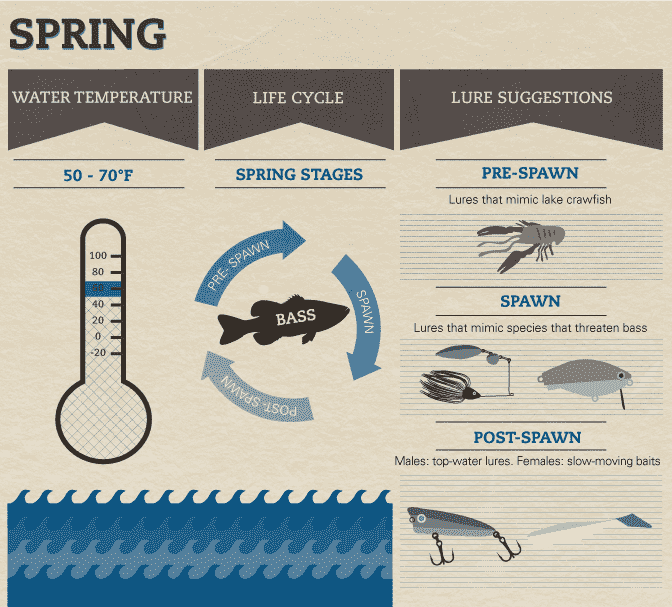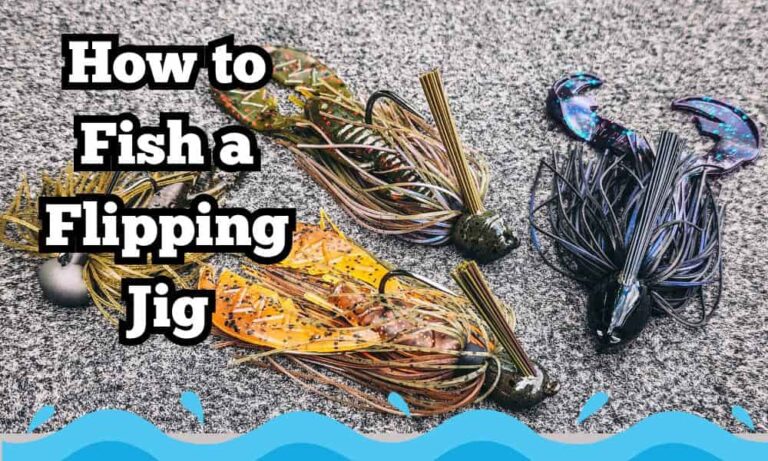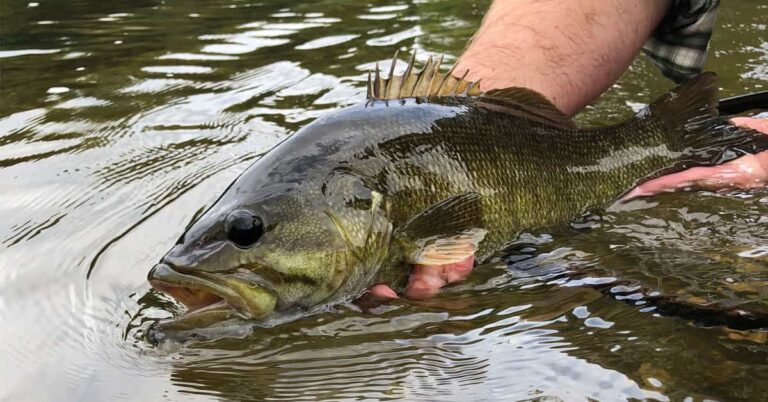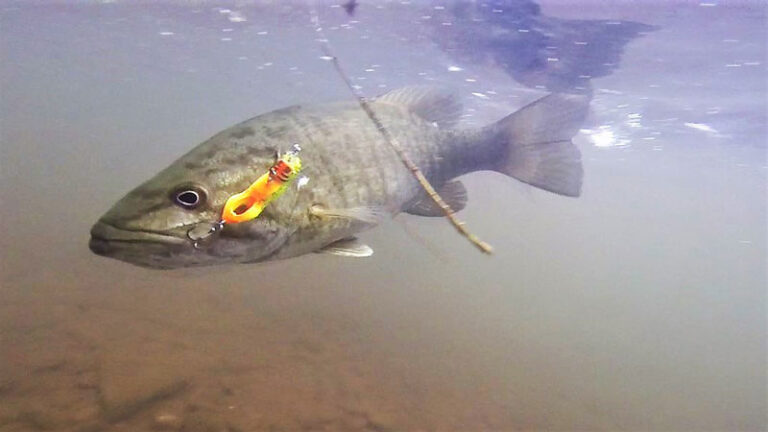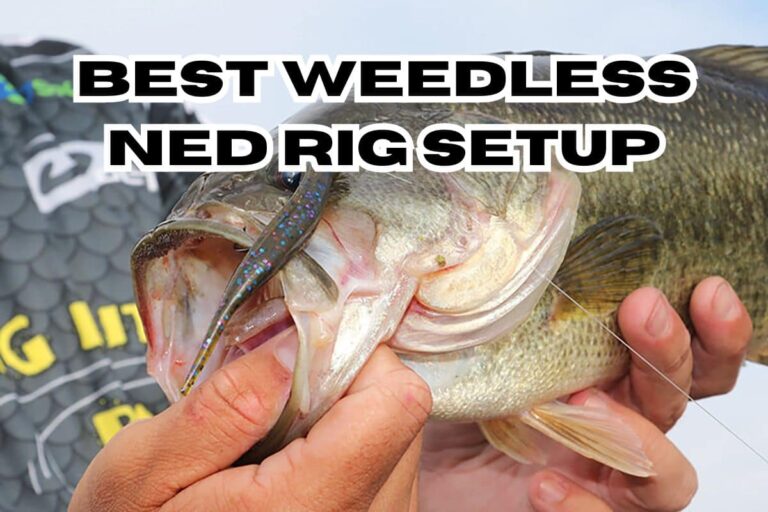When Do Bass Spawn? Time of Year and Water Temperature
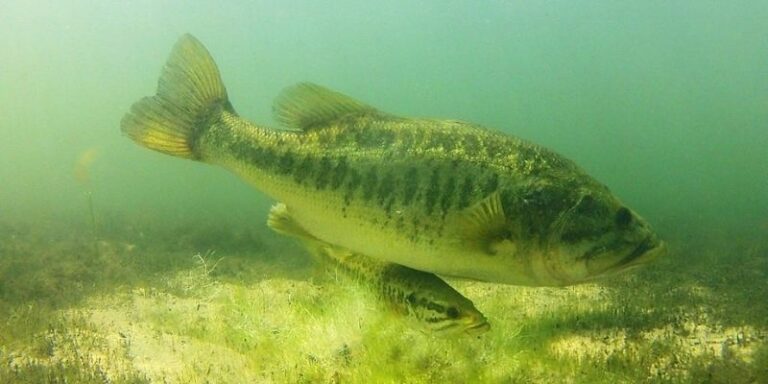
When do Bass spawn?
Bass will begin to spawn in the spring once water temperatures reach from 50 to 60 degrees Fahrenheit (10 to 15 degrees Celsius).
The exact timing can vary based on geographical location, with early, mid, and late spring periods influencing when bass spawn.
April is the month that bass spawn the most, but geography and details of the lake will influence this.
Influence of Geography and Water Bodies
The timing and behavior of bass spawning are greatly influenced by geographical factors and the characteristics of the water bodies they inhabit.
Different regions and types of water bodies create distinct spawning environments for bass, impacting their reproductive patterns and success.
Also Read: When is the Post Spawn for Bass Fishing?
United States Bass Spawning Map
Climate and Temperature: Bass spawning times vary across different regions due to variations in climate and water temperatures. Warmer southern regions experience earlier spawning compared to cooler northern areas.
Latitude and Photoperiod: The length of daylight hours, or photoperiod, affects bass spawning readiness. Bass in higher latitudes may spawn later due to shorter daylight hours during the spring. In other words, the closer you are to the equator, the earlier bass will spawn.
Water Depth
Shallow vs. Deep Waters: Shallow water warms up much faster which makes bass spawn earlier.
In a shallow lake near the equator bass can spawn as early as the end of January.
In deeper, northern lakes, bass might not spawn until as late as May.
Seasonal Variations in Spawning Times
The bass spawning season is a dynamic period that unfolds across different phases of spring, influenced by various environmental cues.
Understanding these seasonal variations in spawning times is essential for anglers, researchers, and conservationists to effectively manage bass populations.
A. Early Spring Spawning
- Characteristics of Early Spawners: Some bass species, particularly in warmer regions, start spawning during early spring when water temperatures hover around 55 to 60 degrees Fahrenheit (12 to 15 degrees Celsius).
- Benefits and Challenges: Early spawners take advantage of warming conditions to ensure a longer growing season for their offspring. However, fluctuating weather and temperature can pose risks to the survival of eggs and fry.
B. Mid-Spring Spawning
- Timing and Considerations: As water temperatures rise to around 60 to 65 degrees Fahrenheit (15 to 18 degrees Celsius), mid-spring spawners begin their reproductive activities.
- Behavioral Shifts: During mid-spring, bass become more active and aggressive in seeking out nest sites and defending territories. This period is favored by many anglers due to increased bass activity.
C. Late Spring Spawning
- Overview of Late Spawners: In regions with cooler climates, bass species exhibit late spring spawning behavior when water temperatures reach 65 to 75 degrees Fahrenheit (18 to 24 degrees Celsius).
- Unique Conditions: Late spawners face less risk of cold snaps, creating a more stable environment for egg incubation and fry development. This contributes to higher survival rates.
Anglers must be mindful of local conditions and regulations to ensure that their activities do not negatively impact bass during their vulnerable spawning periods.
Environmental Triggers
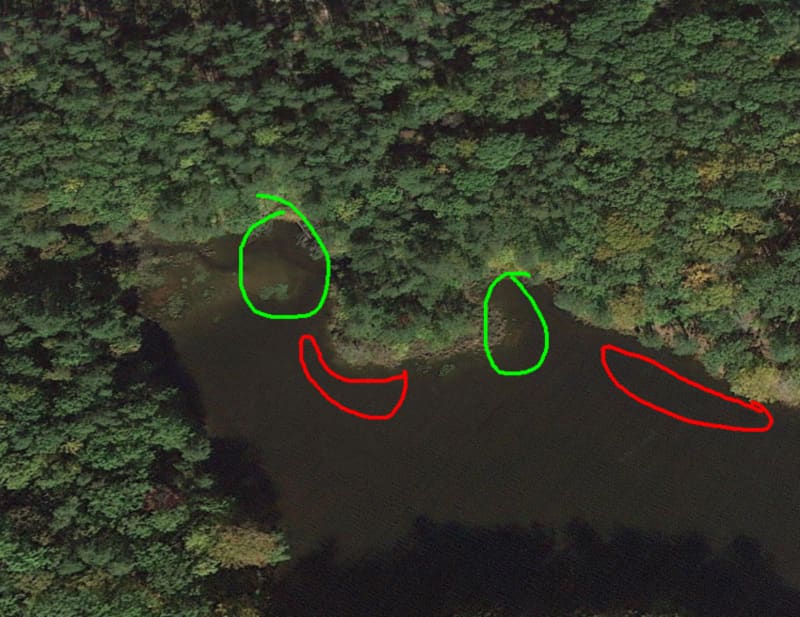
Bass spawning is a complex process influenced by a variety of environmental factors, with water temperature and photoperiod (day length) serving as key triggers.
These triggers interact to signal the beginning of the reproductive cycle and ensure the successful propagation of bass populations.
A. Water Temperature as a Critical Factor
- Ideal Temperature Range: Water temperature plays a pivotal role in initiating bass spawning. The optimal range for most bass species is between 55 to 75 degrees Fahrenheit (12 to 24 degrees Celsius).
- Temperature-Dependent Behavior: As water temperatures rise within the preferred range, bass become increasingly active and start moving towards shallower, warmer areas in preparation for spawning.
B. Photoperiod (Day Length) Effects
- Changing Day Length: The length of daylight hours, known as photoperiod, acts as a crucial environmental cue for bass spawning.
- Spring Equinox Effect: As days lengthen following the winter solstice, the increase in daylight hours triggers hormonal changes in bass, preparing them for the reproductive phase.
C. Interaction of Temperature and Photoperiod
- Synchronizing Triggers: The interaction between water temperature and photoperiod is essential. Bass may not spawn until both triggers are aligned, ensuring optimal conditions for egg fertilization and fry survival.
- Geographical Influence: The timing of spawning can vary with geographical location. In higher latitudes, where daylight hours increase more slowly, bass may spawn later compared to regions closer to the equator.
Bass Spawning Basics
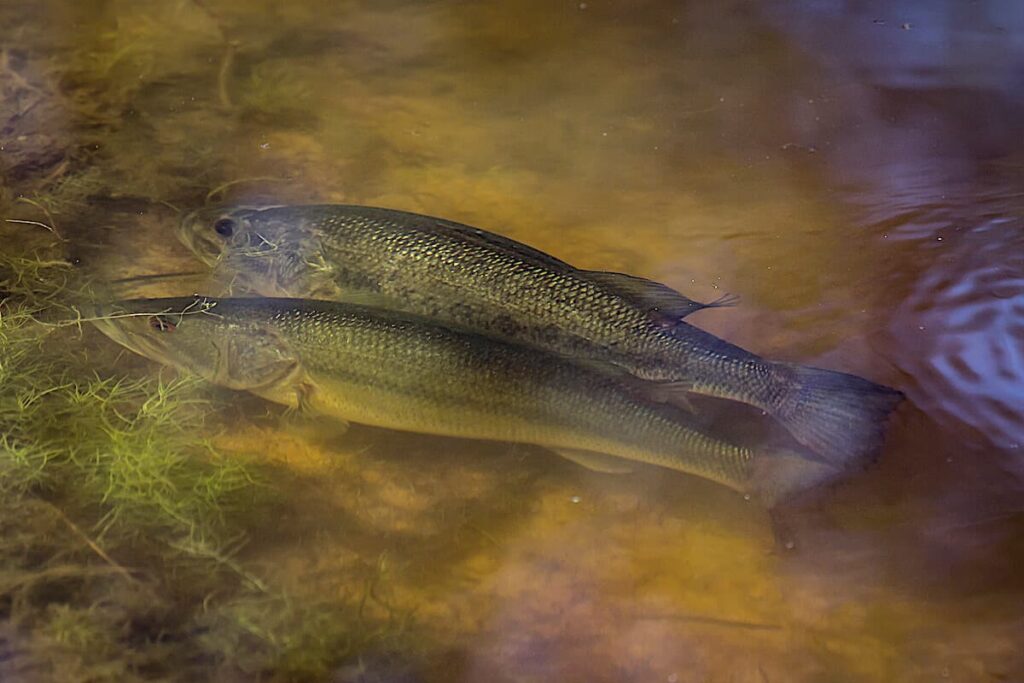
You know, those underwater ballet moves that create new generations of these popular sportfish. So, here’s the lowdown on how it all goes down.
Male and Female Teamwork
Just like in any good partnership, both male and female bass have their roles in the spawning process. The males are like the construction crew – they’re the ones who build the nests. They pick a nice cozy spot, usually in shallow water, and create these little depressions using their tails to move around the gravel or sand. Think of it as their version of redecorating!
Initiating Spawning
Now, the big question: when does all this baby-making business start? Well, it’s all about temperature. When the water warms up to around 55 to 75 degrees Fahrenheit (12 to 24 degrees Celsius), bass get the signal that it’s time to party. This is usually during spring when everything’s thawing out.
Nest Building and Guarding
As the water heats up, male bass start getting busy with nest building. It’s like a DIY project they take super seriously. They collect debris, sticks, and anything else they find lying around to create a cozy little spot for the eggs. And once the eggs are laid by the females, the males become the fierce guardians. Bass will attack any predators or lures that come near the bed.
Pre Spawn Bass Behavior
Picture this: bass getting ready for the spawn. But before they roll out the welcome mat for their future fry, there’s a whole lot of fascinating pre-spawn behavior going on beneath the water’s surface. Let’s take a sneak peek into what’s happening in the bass world during this exciting phase.
1. Location Scouting
Just like picking the perfect vacation spot, bass start scouting for the ideal spawning sites. They’re looking for shallower areas with the right mix of cover – think submerged vegetation, rocks, and fallen branches. It’s like they’re finding the best Airbnb for their upcoming family affair.
2. Feeding Frenzy
You might think bass are all about love during this time, but they’re also in a serious feeding frenzy. They’re stocking up on energy reserves for the intense spawning process ahead. So, if you’re trying to lure in a big one, pre-spawn is a time when they’re on the hunt and might just fall for your bait.
3. Temperature Tug-of-War
Water temperature becomes the ultimate game changer. Bass are like Goldilocks – they want it just right. As the water slowly warms up, they start inching closer to the shallows. But if it’s still a bit too chilly, they might hold off. It’s all about that perfect temperature range of 55 to 75 degrees Fahrenheit (12 to 24 degrees Celsius).
4. Gathering in Groups
Imagine bass having a pre-spawn party – that’s what happens when they gather in groups before the big event. These gatherings are like networking events for bass, with both males and females mingling and getting ready for the main event. It’s their version of speed-dating, fish-style.
5. Mood Swings and Aggression
Just like humans, bass can get a bit moody during this time. As they get closer to spawning, males become more territorial and aggressive making it a great time for bass fishing. They’re staking their claims and setting up shop around their chosen nesting sites, ready to defend them from any intruders.
Key Takeaways
- Bass Spawning Timing: Bass typically begin spawning in spring when water temperatures range from 50 to 60 degrees Fahrenheit (10 to 15 degrees Celsius), with April being a peak spawning month.
- Geographical Influence: Geography and water body characteristics significantly affect bass spawning, with different regions and water types creating distinct spawning environments.
- United States Bass Spawning Map: Climate, temperature, latitude, and photoperiod contribute to variations in bass spawning times across different regions in the United States.
- Water Depth Impact: Shallow waters warm up faster, prompting earlier bass spawning. In contrast, deeper northern lakes may witness spawning as late as May.
- Seasonal Variations: Bass spawning unfolds in early, mid, and late spring phases, each with unique characteristics and challenges.
- Environmental Triggers: Water temperature and photoperiod serve as critical triggers for bass spawning, influencing their reproductive cycles.
- Male-Female Teamwork: Both male and female bass play distinct roles in the spawning process, with males building nests and females laying eggs.
- Nest Building and Guarding: Male bass engage in nest-building as the water heats up, and they fiercely guard the eggs once laid by females.
- Pre-Spawn Behavior: Before spawning, bass exhibit behaviors such as location scouting, feeding frenzy, temperature sensitivity, group gatherings, mood swings, and aggression.
FAQ
Q1: How does water depth impact bass spawning? A1: Shallow waters warm up faster, leading to earlier bass spawning, while deeper northern lakes may experience spawning as late as May.
Q2: What are the seasonal variations in bass spawning? A2: Bass spawning occurs in early, mi2d, and late spring phases, each with unique characteristics and challenges.
Q3: What are the environmental triggers for bass spawning? A3: Water temperature and photoperiod (day length) are critical triggers for bass spawning, with their interaction ensuring optimal conditions for egg fertilization and fry survival.
Q4: What is the role of male and female bass in spawning? A4: Male bass build nests and guard eggs, while females lay eggs during the spawning process.
Q5: What pre-spawn behaviors do bass exhibit? A5: Pre-spawn behaviors include location scouting, feeding frenzy, temperature sensitivity, group gatherings, mood swings, and increased aggression.
Q6: When is the peak spawning month for bass? A6: April is considered the peak spawning month for bass, but geographical and lake-specific factors can influence this timing.
Q7: How can anglers contribute to bass conservation during spawning? A7: Anglers should be mindful of local conditions and regulations to avoid negatively impacting bass during their vulnerable spawning periods, prioritizing conservation efforts for the long-term health of bass populations.
Conclusion
So, bass usually will spawn between the March and May months. These underwater rituals are guided by temperature, light, and geography, creating a mesmerizing dance of life.
Remember, as we celebrate this natural spectacle, let’s also champion its conservation. Whether angler or observer, we hold the responsibility of safeguarding this delicate process for generations to come.

